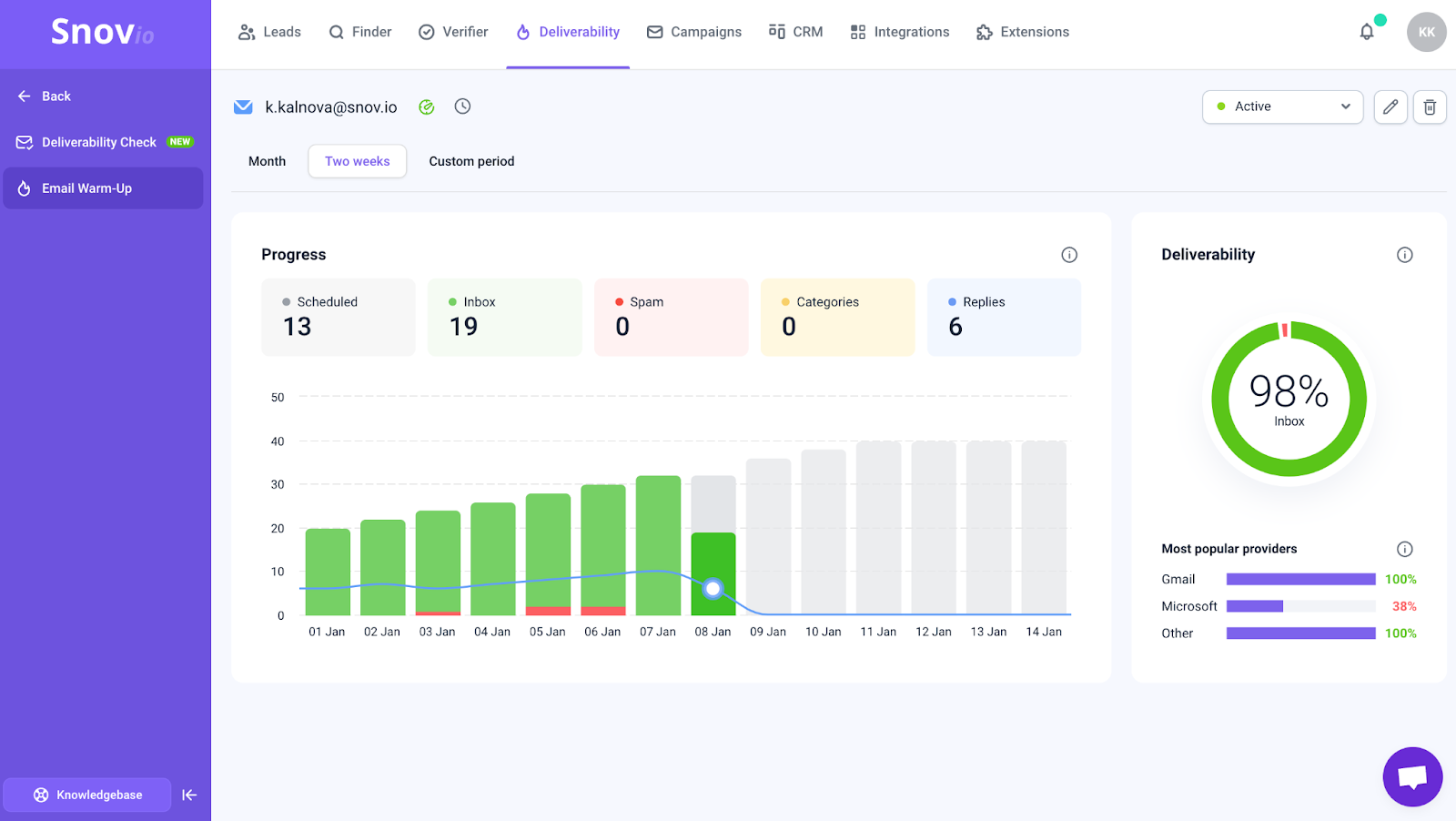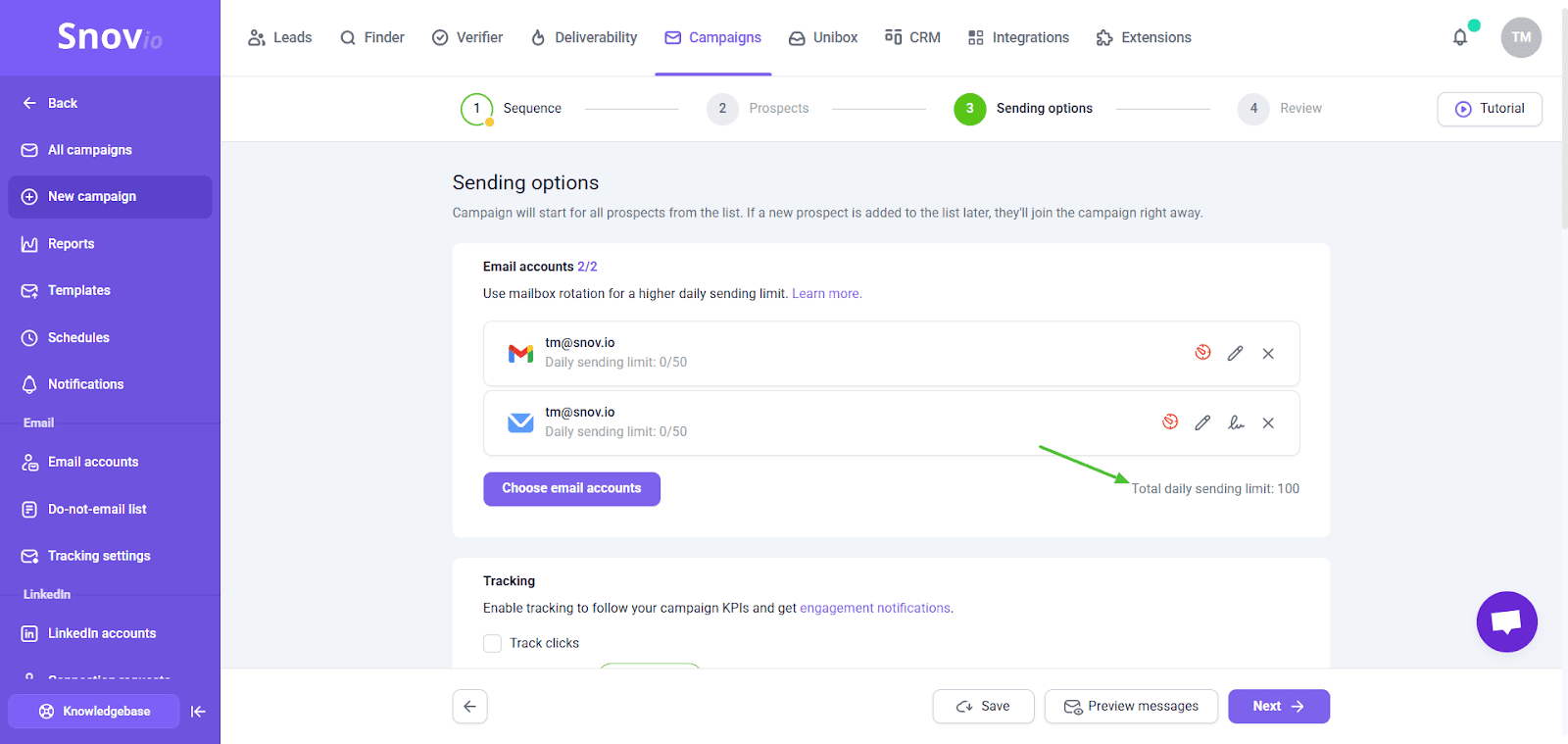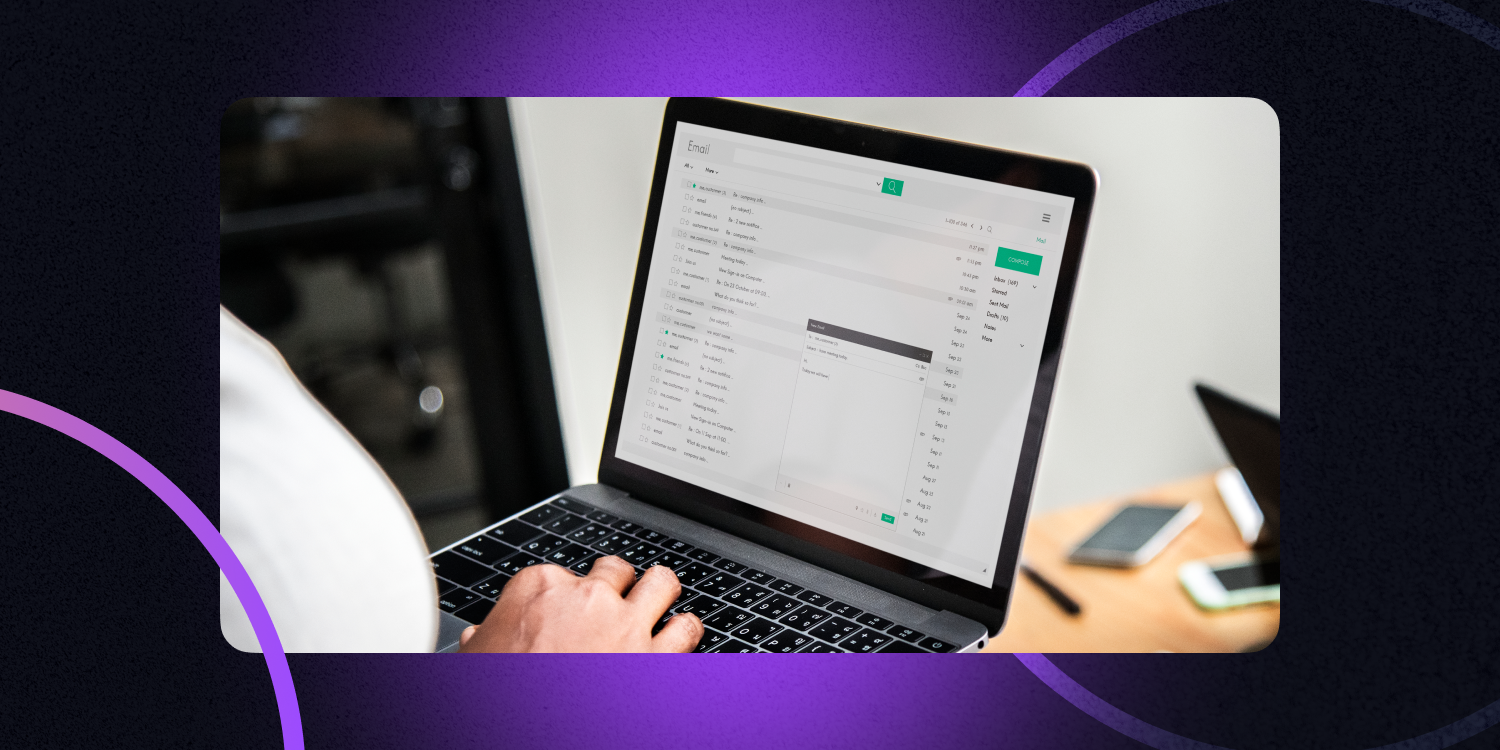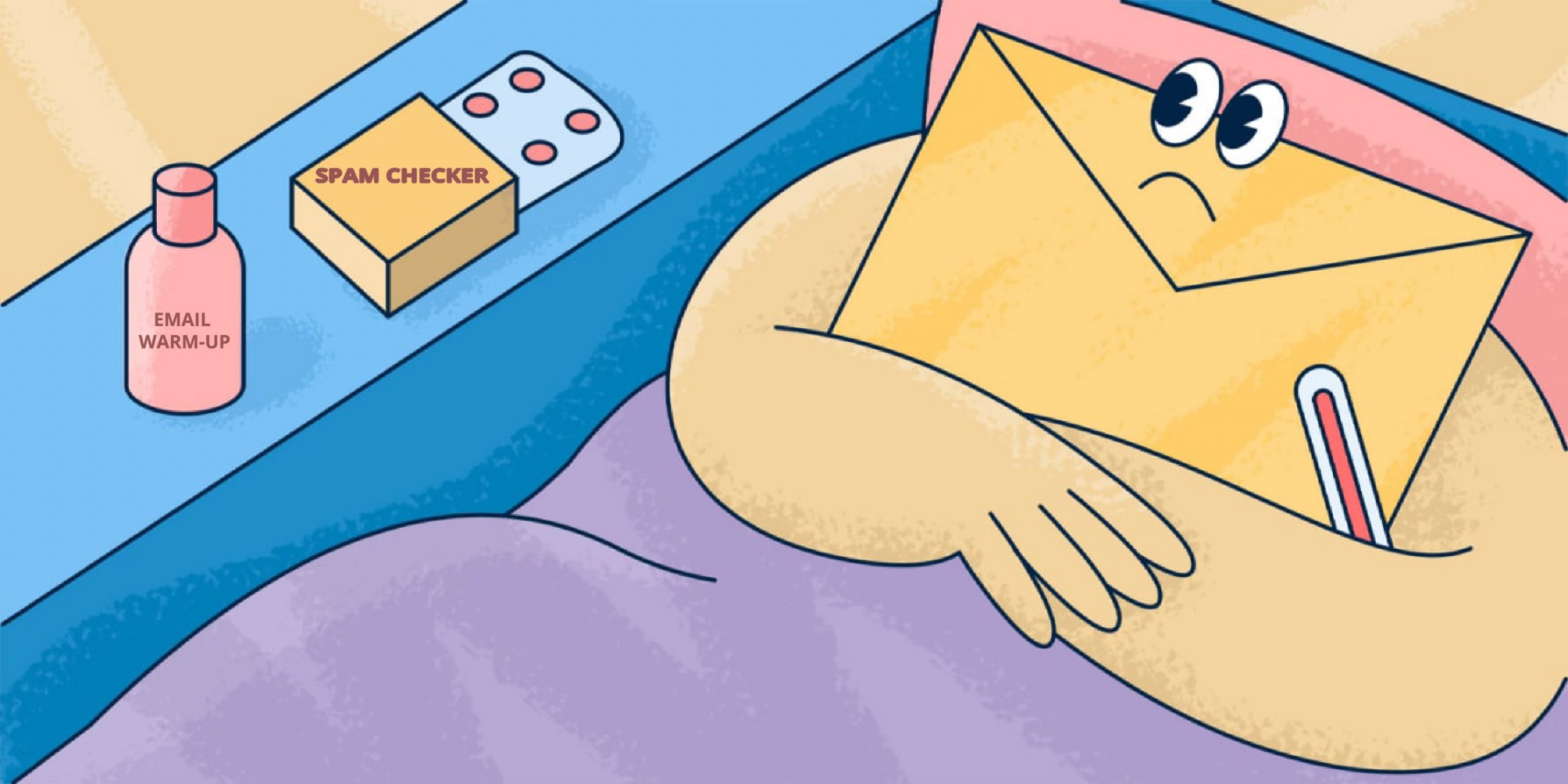Whether you’re sending an automated cold email, a sales pitch, or a follow-up, your message needs to fly right to the inbox to make a true impact. When it lands in spam, however, your sender reputation and email deliverability are at risk, to say nothing of all wasted outreach efforts.
But why are emails going to spam, and what can you do to prevent it? Let’s figure it out together.
Outline:
TL;DR:
I’ve compiled all possible reasons why emails are sent to spam and related solutions in a quick summary table.
| Reason | Solution |
|---|---|
| Missing SPF, DKIM, and DMARC | Set up SPF, DKIM, and DMARC records |
| Low sender reputation | Improve engagement, reduce bounces, and send to targeted opt-in contacts |
| Untrustworthy shared IP | Use a dedicated IP and warm it up properly |
| Poor email list quality | Build lists organically and regularly verify contacts |
| Spam complaints by recipients | Target the right contacts, personalize your email content, and use unsubscribe links |
| Suspicious sending behavior | Warm up new accounts gradually and send campaigns consistently |
| No unsubscribe option | Always provide the option to unsubscribe from your campaigns |
| Too many visuals, links, or heavy attachments | Use a balanced text-to-image ratio (one image, one link, one attachment), A/B test campaigns to find proper formatting |
| Spam-trigger words in your email content | Avoid spammy language (“free”, “buy now”, etc.), capitalization, and excessive punctuation |
Read the whole article to learn more about why your emails get flagged as spam and steal away working solutions on how to avoid the spam folder.
Top reasons why emails are going to spam
If your email goes to spam, it means that it triggered spam filters set by the recipient’s email service provider (ESP).
All providers have their own filters designed to protect users from unwanted, irrelevant, or malicious content. They scan each email for suspicious signals and assign a “spam score.” If this score is too high, the message is marked as spam or rejected altogether.
Spam filters use various criteria to analyze incoming messages — from technical setup and sender reputation to content, formatting, and even recipient engagement. So, let’s break down what factors can affect your deliverability and possible reasons why your emails are going to spam.
1. You haven’t set up SPF, DKIM, or DMARC records
When DNS (Domain Name System) records, such as SPF, DKIM, and DMARC, are not set up, providers can’t verify that you’re a legitimate sender. This directly influences your sender reputation and makes your emails look suspicious or spoofed. As a result, they can get flagged or blocked by spam filters.
2. You’ve got a low sender reputation
ESPs track your domain’s behavior, analyzing bounces, complaints, and engagement level. If many people ignore your messages or rarely interact with them, it may negatively impact your reputation. With a low sender score, it becomes more likely that your emails go to the spam folder.
3. Your sending IP isn’t trustworthy
This issue may happen when you use a shared email address. The thing is that ESPs associate harmful activity not only with the domain, but also with the mailing IP. If others on the same IP address send spammy content, your deliverability will also suffer.
What’s more, the IP’s reputation stays with the address for months, so its history also matters. Even though you’re doing everything right, negative reputation history records on your shared IP may be another reason why your emails are going to spam.
4. Your email list quality is poor
When I hear “Why are my emails going to spam?”, I usually ask, “How often do you clean your list?” If you do it approximately never, this explains a lot. Outdated, bought, or scrapped lists (especially when you’re using unreliable scraping tools) often contain invalid addresses.
Sending to unengaged or non-existent contacts commonly results in high bounce rates and low interaction. This may signal ESPs that your content is unwanted and make your emails go to spam.
5. Recipients marked your emails as spam
I know it hurts, but sometimes recipients themselves flag messages as spam. These feedbacks go directly to providers, increasing your spam complaint rate. So, even a few manually marked emails can seriously damage a sender reputation, especially when sending to irrelevant contacts.
6. Your sending behavior looks suspicious
If you start sending hundreds of messages at once without doing a proper warm-up, you’ll look suspicious to ESPs. It is especially risky when your account is new or has been inactive for a while. Sudden spikes in volume or inconsistent activity resemble spam-like behavior, preventing campaigns from landing in users’ inboxes.
7. You don’t provide the “Unsubscribe” option
Failing to include an unsubscribe link in emails violates spam regulations, such as CAN-SPAM and GDPR. So, filters detect this behavior as deceptive or aggressive, flagging your messages as spam.
8. You include too many images, links, and attachments
Adding too many visuals, links, or heavy attachments may also be a reason why your email goes to spam. The thing is that spam filters can’t read images like they do text, so image-only messages are considered suspicious.
As for cold emailing, including images even alongside the text can trigger spam filters. For example, Gmail often displays a warning when it detects content from unfamiliar senders. Thus, your images aren’t shown by default, and recipients are asked whether they want to see them.
Meanwhile, large files with many links in messages may also be blocked as they often resemble promotional spam content or phishing attempts.
9. You’re using spam trigger words
The words and phrases, like “free,” “buy now,” “act now,” “cash,” “credit,” and so on, especially when combined with excessive punctuation or capitalization, can cause serious spam issues. This wording is typically used in scams, so filters treat it with caution. And let’s be honest, using these phrases makes a message look unprofessional.
How to avoid the spam folder and enhance email deliverability
Now that you know the main issues that can affect deliverability, consider practical strategies and tips on how to avoid the spam folder:
Set up proper authentication
To establish trust with inbox providers, complete a domain’s DNS setup before sending campaigns. If your email fails the authentication check, it’s a signal that it may be blocked by spam filters.
Configure SPF, DKIM, and DMARC settings to prove that your messages come from an authorized sender. These protocols help prevent spoofing and phishing, making your domain more trustworthy in the eyes of inbox providers:
- SPF (Sender Policy Framework) contains information about IP addresses allowed to send campaigns from a specific domain.
- DKIM (DomainKeys Identified Mail) adds a digital signature to your messages, verifying that the email content hasn’t been changed during transit.
- DMARC sets rules for how ESPs should process incoming emails that fail SPF or DKIM checks.
→ Learn how to avoid the spam folder by setting up DNS records for a sender domain.
Build a targeted email address list
Ensure your list consists of recipients who truly match your target audience and actually want to hear from you. This improves open and reply rates, sender reputation, and email deliverability.
To build a high-quality list, gather email addresses organically through opt-ins, lead forms, or personalized outreach. You can also boost the process with Snov.io Email Finder, safely collecting contact details from any website in a few seconds. The biggest plus is that all these contacts are already verified, ensuring zero bounce rates and higher deliverability.
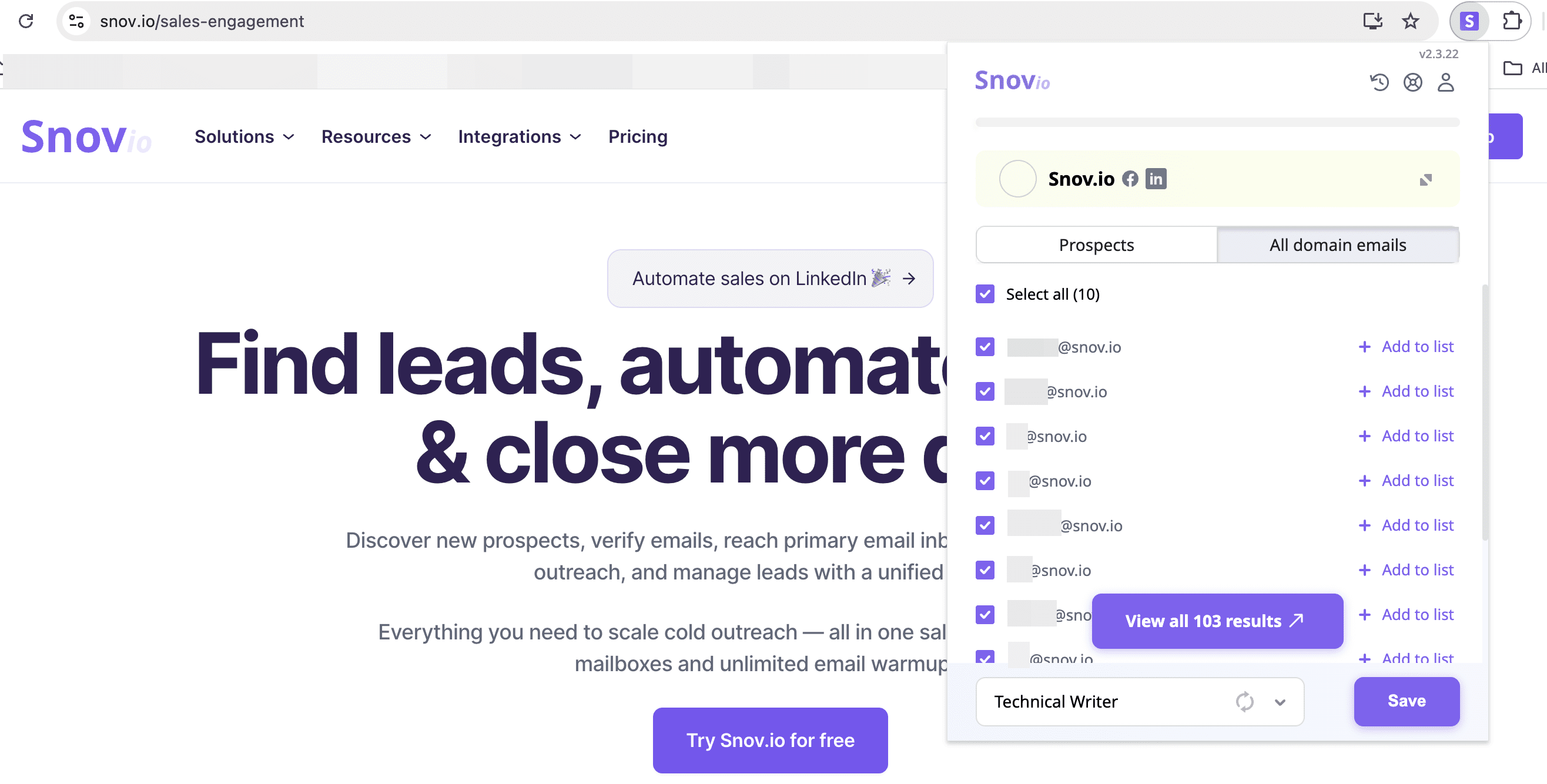
Always clean your email list – this helps you get rid of invalid or outdated contacts and reduce bounce rates. Doing it manually can be hard, so you can rely on an automated Email Verifier.

This tool lets you validate both individual and bulk email addresses.
Ensure your email content is spam-free and relevant
Email content, from subject lines to attachments, can significantly impact deliverability. Make your message clear, personalized, and relevant to your audience. Recipients should clearly understand the value you offer from the start. Consider creating a professional subject line that accurately reflects the content of the message and resonates with the recipient.
Avoid spam-trigger phrases, excessive punctuation or capitalization, and bold fonts. Don’t tease spam filters with excessive images, links, or heavy attachments. One visual or link is more than enough.
💡 Expert tip
I recommend including a plain-text version if you’re using HTML. Thus, you’ll build trust with spam filters by showing that you’re a legitimate sender who follows best practices.
It also ensures your emails are visible to recipients who don’t view HTML content in their inbox. Finally, this approach may yield higher open and reply rates, as screen readers often rely on the plain-text format for scanning messages.
Get a dedicated IP address
With a dedicated IP, you’ll have full control of your sender reputation, receiving a personal email server’s address you won’t share with anyone else.
The ESPs, such as Microsoft (Outlook), Zoho, Sengrid, Mailgun, and others, provide dedicated IP addresses. However, in many cases, this option is available only if you’re consistently sending in high volumes. If your volume is low, consider warming up your account gradually.
→ Learn more about how you can set up a dedicated IP address.
Use clear “From” information
A key but often overlooked strategy on how to avoid the spam folder involves ensuring a clear sender name. If your “From” section looks vague, unfamiliar to recipients, or suspicious, users might mark your message as spam. Or else, it may trigger spam filters, bringing you the same outcome.
Always use a recognizable name to build trust with both recipients and email service providers. You can include your full name and brand name in the “From” field. Just ensure consistency, so the sending address matches the domain.
Follow reasonable sending limits
Whether the idea of reaching out to many prospects at once sounds tempting, it’s better to avoid sending large volumes too quickly. Instead, increase the daily limit gradually. Our experts recommend keeping a sending capacity of 50-100 emails per day from a single account.
Sending more than this limit can be considered spamming activity by inbox providers. If you need to send emails in large volumes, consider distributing them across multiple accounts.
Besides, if your opens or replies are not as high as you expect, don’t try to compensate for it by increasing the number of recipients. In the end, no matter how many messages you send, if your email goes to spam. Instead, refine your email content, implement targeted segmentation strategies, and conduct A/B testing to find out what resonates most with your audience.
A/B testing plays a critical role in optimizing cold outreach. Sometimes, something as small as having (or not having) a dot at the end of the subject line can impact reply rates. Even using an exclamation mark (!) can influence how your message is perceived.
To ensure accurate results, test only one thing at a time and with similar ICPs. Thus, you can get what actually changed. A/B tests for whole emails are not actually A/B tests.
VP of Sales at Snov.io
How Snov.io helps you stay out of spam
One of the most often-overlooked secrets of how to avoid the spam folder is a reliable outreach tool. And that’s where Snov.io comes in!
Above, I’ve already mentioned how this platform can help you with quality list building and email hygiene. In this part, I’ll share more of Snov.io’s built-in features that protect your sender reputation and email deliverability:
Email warm-up tool
Snov.io Email Warm-up tool helps you build a strong sender reputation before launching real campaigns. It creates realistic conversations that mimic natural email interactions. This activity signals to providers that your account is active and trustworthy, reducing the chances of being flagged as spam.
Whether you need to prepare a new account for cold outreach or want to improve your domain reputation, Snov.io provides a professionally crafted strategy for various purposes.
You can enhance your sender reputation even more by exchanging emails only with a Premium pool of business or corporate mailboxes. Plus, you can choose particular providers for your warm-up to ensure perfect inbox placement while overcoming domain-specific issues.
Learn more about how to use warm-up for the best effect from this video:
Mailbox rotation
Want to send bulk campaigns without risking your domain reputation and being marked as spam? With Snov.io’s Mailbox rotation feature, you can easily distribute your email volume across multiple accounts.
Quickly connect your sending accounts and boost your outreach safely by increasing your overall daily sending limit.
Real-time deliverability and domain health insights
With Snov.io Deliverability Test, you can run an instant deliverability check-up and detect potential problems before they affect your campaigns. Here is what you can test in particular:
- Domain health
- Inbox placement score
- Email content
- If your domain or IP address is blacklisted
- SpamAssassin score
The results are displayed on a dashboard, so you can analyze all aspects effortlessly.
The best part is that after launching this test, you receive personalized recommendations on how to fix all issues found. All these tips and practices are tailored to your specific case, helping you improve your inbox rates.
Custom tracking domain
Snov.io allows you to substitute a default shared domain with a branded domain so you look more trustworthy as a sender to spam filters.
More so, Snov.io automatically issues SSL certificates for your custom tracking domain. This means all links in your emails will start with https:// instead of http://. This connection is more secure, which reduces the chances of your campaigns being flagged as spam.
→ Learn more about how to avoid spam folders by setting up a custom tracking domain in Snov.io.
Automated outreach
With the Snov.io Cold Email tool, you can create highly personalized sequences automatically while maintaining natural sending behavior patterns. You can set custom delays, adjust your campaign flow based on the recipient’s behavior, add an unsubscribe link to emails, and match your sender account’s provider with the recipient’s provider for better deliverability.
Plus, Snov.io’s AI Email Builder lets you create personalized email messages based on your Ideal customer profile (ICP) and buyer personas. This ensures each message feels personal and relevant, reducing the likelihood it will be marked as spam.
Key takeaways
A question, “Why are my emails going to spam?” so popular with email marketers has motivated me to prepare this article, where I tried to describe more or less evident spam-trigger issues and provide solutions to fix the problems.
Here are the most crucial takeaways from it:
- Emails land in the spam folder when they trigger filters set by inbox providers.
- The most common reasons why your email goes to spam include missing authentication (SPF, DKIM, DMARC), poor sender reputation, unhealthy email lists, and spammy or excessive sending behavior.
- What may cause recipients to mark emails as spam is the absence of the “Unsubscribe” option in emails, vague sender credentials, and irrelevant content.
- To stay out of spam, it’s important to properly set up DNS records, warm up your email account before running campaigns, clean your email list, use a dedicated IP, and maintain safe sending limits.
To make this process smoother and more effective, you can rely on platforms like Snov.io. With built-in tools for email warm-up, deliverability testing, and safe outreach automation, you get everything you need to protect your sender reputation and leave a spam-landing experience in the past!



